Every
QUILT
Tells a Story
A Quilters Stash of Wit and Wisdom

Helen Kelley

Dedication
To Bonnie Leman and Mary Leman Austin.

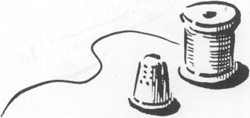
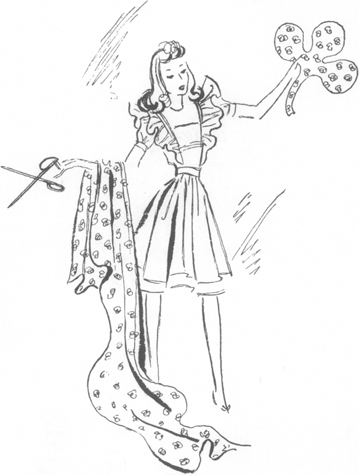
 CONTENTS
CONTENTS
 PREFACE
PREFACE
I am a quiltmaker, purely and simply put. There is no need to explain that to another quilter. To a non-quiltmaker, however, the compulsion to cut fabric into little pieces and sew them back together again (as the non-quilt world puts it) is a puzzlement. The astonishing satisfaction that comes from quilting is beyond explanation.
Be that as it may, the fact is that I spend my days surrounded by loose threads, quilt-square clippings, and stacks of folded fabric. Long sinuous fibers trim my workroom rug and cling to my clothing. Scraps of appliqud pieces and colorful quilt blocks lie like confetti around me. The coveted quilters stash surrounds me in growing towers of calico and muslin.
I am a hand-quilter and because of that, I spend long hours at the quilt frame. Non-quilters marvel at my persistence and my concentration. I will confess that hand-quilting, for me, gives me the time and opportunity to mull over the State of the World, and the State of Helen. Consequently, if I am able to break my mind away from the steady rhythm of the rising and falling of my needle, I can jot down the thoughts that drift through my mind and try to capture a few of those mental threads and the stories that go with them, putting them down on paper to share with my quilting friends.
I did not start out to be a quiltmaker. Long ago and far away, I thought that I was going to be an actress. I actually studied for the stage, and though I do not know now if I would ever have been a successful Ophelia or Eliza, acting taught me some really important quiltmaking skills. For one thing, I learned endurance. Acting is very hard work with long hours of rehearsal, daily discipline, and total commitment. Acting also taught me to look at the world around me and to discover it and to love it and to relive it. There are lots of things we all do in our lives that teach these precious lessons, but for me, it was the acting experience that helped me learn to focus.
In 1946, during the aftermath of World War II, I became engaged to marry a Marine and I began my first quilt. I spent two years making my wedding quilt, and because I knew no other quilters, my quiltmaking processes were basically invented. It was sheer happenstance that I was actually able to produce that quilt.
This is how I went about it. I studied a quilt that had belonged to my mother, and using a long-forgotten kit that she had stored in the bottom of a drawer for forty-five years, I appliqud large quilt squares of purple daisies and green leaves. I trimmed the edges of the appliqu with tiny button-hole stitches and manipulated the entire assemblage of stitched flowers and alternate Nile green blocks into a double-bed-sized quilt. How I managed that out-of-control conglomeration is still a mystery. The top, cotton batt, and sheet were layered and stitched together in long, parallel, diagonal lines. I thought it was beautiful. These many years later, the sentiment is still beautiful. I realize, now, that aesthetically, it falls somewhat short.
Over the succeeding years, and through the raising of five children, my quiltmaking improved, but my occasional flight into textile fancies was actually a survival technique. In the midst of a rambunctious, creative family, quilting held my mind together and kept my sanity intact.
Through the early 1970s, my life resembled the ruffled and flouncy world of TVs The Donna Reed Show. My house was clean. The meals that I made daily and on time were nutritious and attractive. Wherever we went as a family, all seven of us were outfitted in identical clothesmatching dresses and shirts created with my trusty Featherweight sewing machine. Early in that decade, my oldest daughter decided to get married. A wedding quilt seemed appropriate, and I challenged my friends and assorted relatives to make squares for that quilt.
It was an ambitious undertaking. Those neophytes had no clue as to how to go about the project, but I cajoled and encouraged them to send me counted thread and needle-pointed and painted pictures which I cut to size and pieced into a double-bed-sized quilt. I sandwiched the layers together and gave a quilting party to initiate my friends into the mysteries of stitching their blocks into a soft, sweet wedding blessing. They came, excited to be part of the celebration, and took their first, halting quilting stitches. The local newspaper thought all of this activity was very quaint and came out and took pictures. When the article about the quilt appeared in the paper, my phone began to ring and I found three more quilters. In fact, I found quilters four and five. When we gathered together, we formed a quilters support group.
For that first meeting, we went to lunch. As you well know, next to quilts, a quiltmakers favorite thing is food. We were hungry women who had longed to talk to someone about color and fabric and patterns. Over a crispy salad and a sinful dessert, we became immediate friends. These women taught mostly in adult education programs, and we shared our quilting secrets, our teaching hints, and methods of coping with underheated winter classrooms and deserted nighttime parking lots. We talked about where we could find the few yards of cotton fabric available (remember that this was during the early 1970s when most people were having love affairs with double knits and polyesters). We discussed how to load the long poles of quilt frames into our cars and the advantages of giant quilting hoops. We had come to our luncheon rather shyly, but we left as fast friends.
Most of those women that day were self-taught. Only a couple had learned to quilt at their grandmothers knee. All of them shared an esteem and respect for history and an appreciation for the inheritance that early quilters have left us.
It was a strange time. Quilting had almost disappeared in the United States. In the 1940s, factory-made bedding had become readily available and affordable. During World War II, many women worked long hours at one, and sometimes two, jobs. They had little time or need for quilts, and the craft of quilting drifted into obscurity. After the war, we plunged into the excitement of TV and an eclectic array of electrical appliances and shiny cars. If quilting was mentioned in magazines, it was as a charming, curious skill from once-upon-a-time.
Those of us who were quilters and met that day around the luncheon table had somehow heard a sirens song. I think, somewhere in that time, each of us had been bewitched by the creative possibilities of quilting, and all of us had an inherited love for fabric.


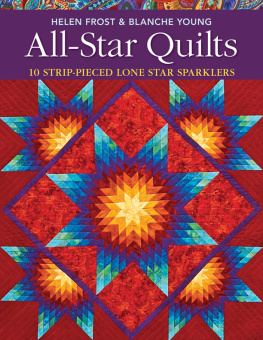
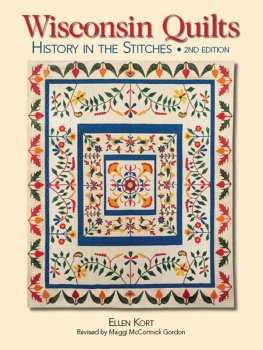
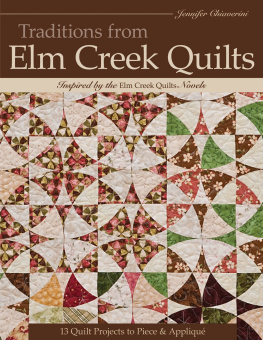
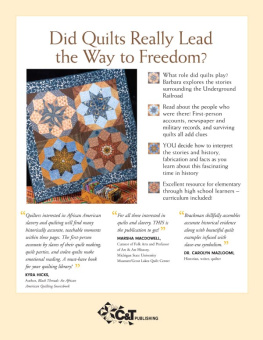
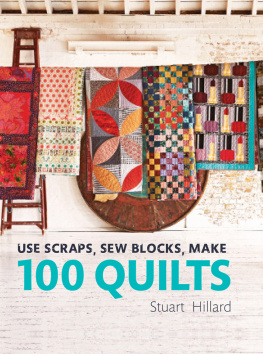

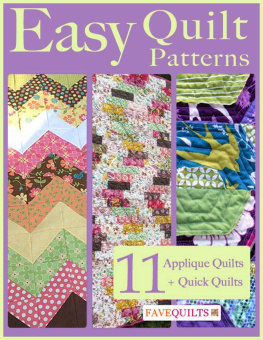





 CONTENTS
CONTENTS